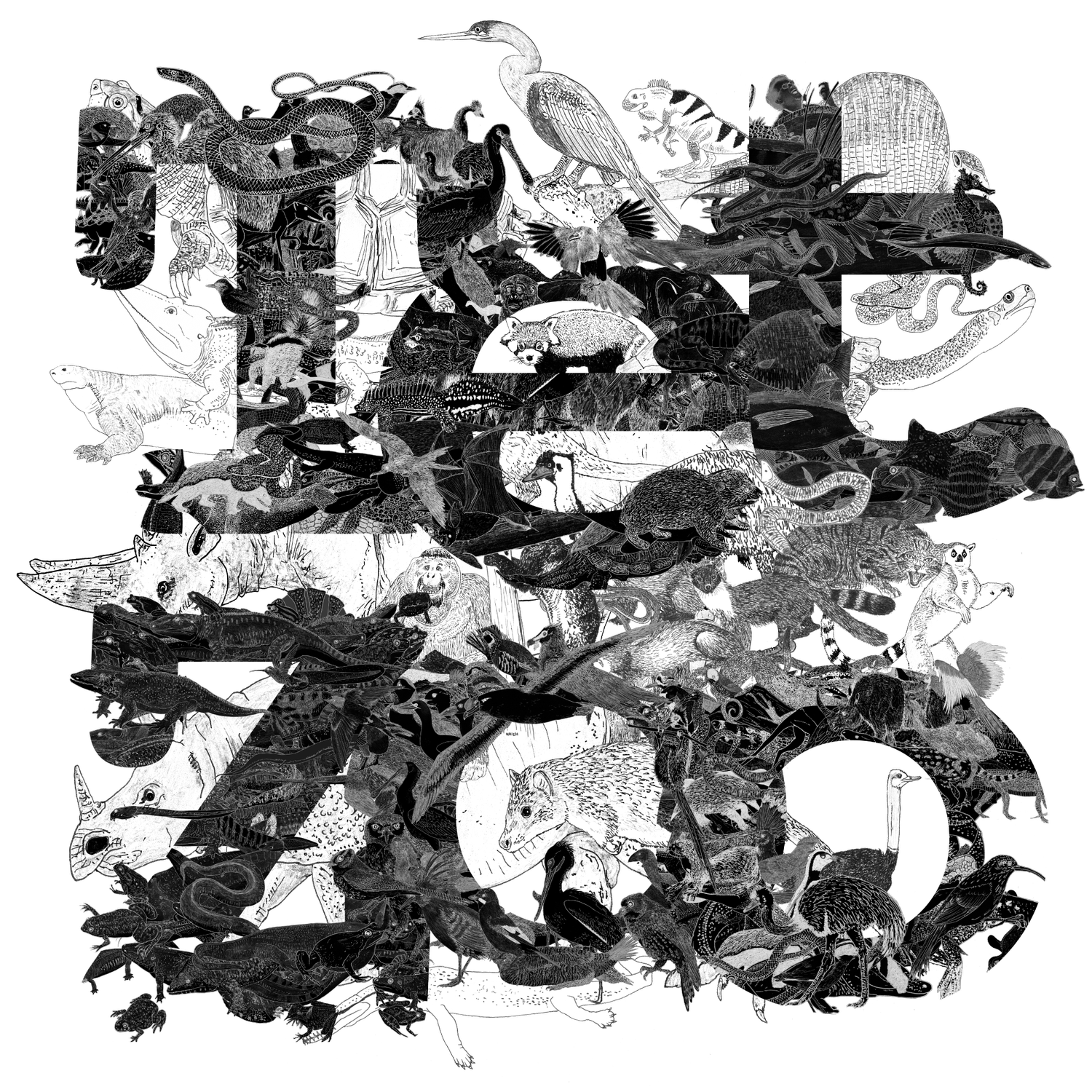It is once more that time of year when the lone amphibian species here – the Common frog Rana temporaria – gathers to breed in ponds and pools. How are things going this year?
Caption: a large scrum of frogs battle and compete in the pond’s shallowest part; a photo from 6th February. It is not unusual for male frogs to leave the pond and move about the edges, presumably in an effort to intercept females as they approach. Common frogs are highly recognisable as individuals due to their bars, spots and stripes, and sometimes injuries and deformities. The individual in the foreground has a damaged left eye. Image: Darren Naish.
Some necessary background. I’m in Southampton, way in the south of England, and hence in one of the warmest, mildest parts of the UK. Every time I talk about frogs spawning during January or February, I have surprised and even incredulous people in continental Europe and North America telling me that surely I’m kidding. No. It’s normal in this incredibly mild, maritime, high latitude but warm part of the world for amphibians to begin breeding in February, January and even in late December. For the current breeding season, the UK’s earliest reported spawn clutch dates to 21st December 2024 in the Isles of Scilly (just off the south-west coast of Cornwall); additional records from Cornwall were made throughout late December 2024, and Devon, a bit further east, had spawn by January 1st. When I was a kid back in the 1980s, Common frogs generally started breeding during the second week of February. As the climate has changed, their spawning has happened earlier and earlier, and at the moment we expect spawn to start appearing during the last week of January.
Caption: a photo from 4th February, the day on which the first spawn clutch appeared. Note that the frogs mass and compete in the shallowest part of the pond, where the water is less than 10 cm deep. Image: Darren Naish.
Caption: a photo from 5th February, the day on which the fourth and fifth spawn clutches appeared. Note the enthusiastic individual at right grabbing an attractive stone. Image: Darren Naish.
This year, things have been a bit weird. Late January was cold, heavily rainy and extremely windy here, and while frogs did begin gathering in my main pond, there was no spawn until February 1st. A massive number of frogs – over 60, the highest count so far – was visible by Feb 6th, so I predicted a record-breaking amount of spawn (we had 31 clutches last year: the highest so far). Six clutches were present on Feb 6th, but the temperatures here then dropped several degrees (from approximately 9° C to around 3° C) and all frog activity ceased. The frogs themselves disappeared from view (presumably taking refuge in the deeper water), and no new spawn clutches appeared, resulting in a plateau on the graph that lasted for about a week. I became convinced that this cold spell had prematurely curtailed the whole breeding season, meaning that 2025 would turn out to be a poor year for overall productivity.
But… no. Temperatures have increased again (today, the daytime temperature here is 13° C) and frog activity is in full swing. They were highly active during the night, over 50 frogs were observed in the pond yesterday, and today we’re at 17 clutches. Will we exceed 2024’s 31? Let’s see.
Caption: I keep records of when spawn clutches appear, but this is the first time I’ve tabulated it properly. The long plateau here was a cause for concern but the massive spike at right shows that we’re now back on track. Image: Darren Naish.
The pond that’s the focus of attention here is newly renovated relative to its 2024 condition, and now has a massive shallow area, lined with stones and surrounded by sloping banks, specifically designed for frog breeding. One interesting aspect of behaviour I didn’t foresee is that Common frogs are really good at inadvertently moving stones around as they compete, fight and push around, and hence shallow parts of the pond lined with stones end up being stone-free, which is upsetting for the aesthetic I was aiming for.
Caption: frogs and spawn massed in the pond’s shallow end. I see Paley, a distinctive and unusually pale frog (yes, I’m trying to identify and keep track of individuals year on year). The patch of exposed pond liner at upper left is a consequence of frogs inadvertently moving stones across the pond floor while competing. Image: Darren Naish.
Finally: I’ve done everything I can to help frogs in the area immediately around my house, and it’s clear that it’s really paid off. This area is now quite frog-rich, and a recently constructed pond about 100 m to the east of us is also now serving as a frog breeding site. That’s a win in an area where people are otherwise working as hard as they can to destroy and remove all areas that might serve as refuge, feeding and breeding sites for frogs. I’ll talk more about ponds and how to create a good one later in the year. For live news on spawnwatch activity here in my part of the world, follow #spawnwatch on Twitter/X and BSky.
Caption: 17 separate clutches present as of 21st February. Several are obviously only a few hours old and still have the tight, dense look typical of new clutches. Note that Common frogs really prefer to spawn in the shallowest water possible, literally just a few cm deep. No frogs are visible here as the arrival of a delivery worker caused them to rush away and hide. Image: Darren Naish.
For previous articles here on frogs and ponds, see…
A Love Letter to the Common Frog, August 2020
Live Spawnwatch Action From Pond 2 at Tet Zoo Towers, February 2024










